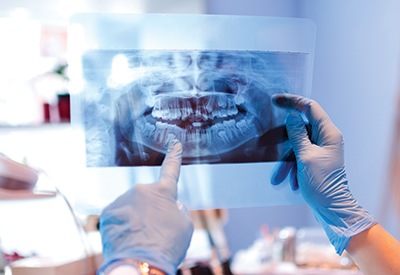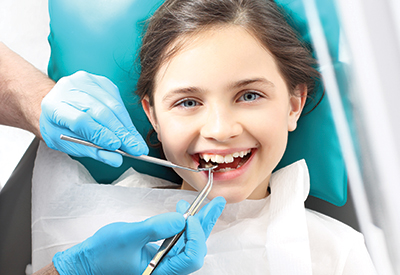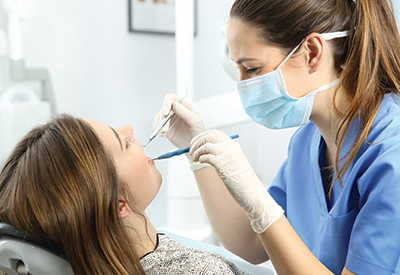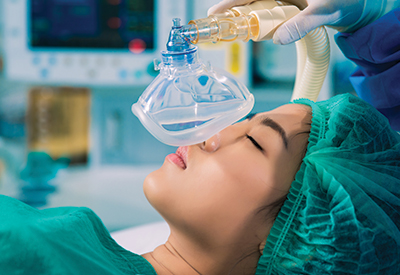
İstanbul Galata Üniversitesi Diş Hekimliği Fakültesi Hastanesi
Prosthetic Dental Treatment

It is the branch of dentistry that deals with the identification, planning, diagnosis, rehabilitation, and upkeep of patients' comfort, attractiveness, oral function, and overall health when they have missing or inadequate teeth and/or maxillofacial tissues through the use of biocompatible replacements. It is divided into branches for maxillofacial dentures, implantology, treatment of TMJ disorders, and detachable and fixed dentures.
What are the types of prosthesis?
Removable Denture
This type of prosthesis replaces some teeth in a partially dentate arch (partial removable denture) or all teeth in edentate arch (complete removable denture). It may be taken out of the mouth and reinstalled by the patient. Retention for such prostheses includes teeth, tissues, implants or a combination of these means.
Removable Partial Denture
It is fabricated to restore missing teeth in a partially dentate arch. It is especially applied when periodontally weak teeth or long edentulous spaces are concerned. Retention of the denture is attained by clasps or precise attachments.
Complete Dentures
The whole dentition and related upper and lower jaw components are replaced with a detachable dental prosthesis. Retention of the denture is provided by supporting and surrounding tissues.
Fixed Dentures
It is the dental prosthesis attached to the prepared teeth, tooth roots and/or dental implants by means of a luting agent. It cannot be removed from the mouth and replaced by the patient. It is fabricated from metal and/or porcelain.
Crown
This type of fixed restoration replaces a single tooth's lost tooth structure by filling in the affected area or the entire tooth with a material like porcelain, cast metal, or a mix of these materials.
Maryland Bridge
This dental prosthesis is cemented to the tooth's structure, mainly the enamel, which has been etched to help the resin cement adhere to it. It is generally applied when an anterior tooth is missing.
Bridge
It is a fixed restoration applied when a single or more teeth are missing. Teeth adjacent to edentulous space are used as abutments and a bridge is fabricated to restore the missing teeth.
Laminate Veneer
It is a procedure in which the surface of teeth with aesthetic issues is covered in thin porcelain layers (veneers) that are bonded to the desired color, size, and shape.
Telescopic Crown
It's a crown made to slide over a framework, or coping. A bar, additional crown, or any other appropriate rigid support for the dental prosthesis can serve as the coping. It is generally applied when tilted, extruded teeth which will produce adjustment problems with the denture are concerned.
Inlays, Onlays
They are fixed restorations used when there is not enough tooth tissue to fill and tooth damage is not substantial enough to use a crown.
Implant Denture
It is a denture type which is retained or supported by implants. It may be a removable or fixed denture.
Maxillofacial Denture
It uses prosthetics, which may or may not be removed on a regular or elective basis, to restore and/or replace the missing stomatognathic and craniofacial structures.
What is Temporomandibular Joint (TMJ) Disorder?
It is the disorder seen in the functions of the TMJ due to pathosis of the joint or tissues outside the joint. TMJ disorders affect the stomatognathic system consisting of oral tissues, head and neck muscles, ligaments. This pathosis is characterized by pain and tenderness in the muscle of mastication or of the joint itself, limited range of jaw movements and noises from the joint during mandibular movements. TMJ disorders are treated by a group of experienced dentists from different disciplines.
What is Zirconia?
Zirconia is a type of ceramic which is used to restore broken, damaged, missing, or decayed teeth. Zirconia restorations blend in flawlessly with the rest of patients’ teeth because they mimic the color and translucency of natural tooth enamel. So, they produce beautiful and strong restorations designed to restore a perfect smile.
Advantages of Zirconia Restorations
- Zirconia crowns are highly esthetic and can closely mimic the appearance of natural teeth.
- Zirconia is an exceptionally strong and durable material. It is resistant to chipping, cracking and wear is very high. Zirconia crowns are durable enough to withstand biting and chewing forces for a long time.
- Zirconia crowns require minimal tooth preparation compared to other types of crowns. This conservative approach helps to maintain the overall strength and integrity of the tooth.
- Zirconia crowns are precisely fabricated using computer -aided and design manufacturing technology. This ensures a custom fit, reduces the risk of inaccuracies, and improves overall comfort and function.
- Zirconia crowns offer high strength without the need for a metal substructure. So, they can be safely applied in patients having metal allergies.
- Zirconia crowns are highly resistant to staining and discoloration. They maintain their natural appearance over time and reduce the need for frequent maintenance or replacement.
What is All on Four Treatment?
All on four is a procedure applied with implant technique for fixing dental prostheses in edentulous patients. Four dental implants placed at certain angles fix the dental prosthesis and provide comfort to the patients. The technique maximizes the use of available remnant bone in atrophic jaws, allowing immediate function and avoiding regenerative procedures that increase the costs and inherent complications.
To Whom All on Four Treatment Is Applied?
- Patients having alveolar bone with adequate width and height.
- Patients who have lost all their teeth due to various reasons.
- Patients with proper general health.
- Patients not having uncontrolled systemic diseases.
- Patients not having radiotherapy or chemotherapy in the near future.

Oral, Dental, and Maxillofacial Surgery
Oral and maxillofacial surgery, a specialized field situated at the crossroads of dentistry and medicine, deals with various surgeries within or ar
Detaya Git
Oral, Dental, and Maxillofacial Radiology
Department of Oral and Maxillofacial Radiology, where intraoral and head-neck region tissues and organs are systematically examined, and all change
Detaya Git
Pediatric Dentistry (Pedodontics)
Pedodontics is a branch of dentistry dedicated to children. It aims to establish oral and dental health at an early age by focusing on the preserva
Detaya Git
Orthodontics
It is a branch of dentistry that undertakes the diagnosis, treatment and prevention of crowded teeth, deviations in the jaws and facial irregularit
Detaya Git
Endodontics
The diagnosis, treatment, and prevention of illnesses and injuries affecting the dental pulp and adjacent tissues are the main goals of the special
Detaya Git
Prosthetic Dental Treatment
It is the branch of dentistry that deals with the identification, planning, diagnosis, rehabilitation, and upkeep of patients' comfort,
Detaya Git
Restorative Dental Treatment
Restorative Dentistry is the department that aims to repair material losses in dental hard tissues caused by caries, abrasions, or fracture
Detaya Git
Periodontology
Periodontology is a branch of dentistry that examines the tissues surrounding teeth and dental implants (gums, jawbone, etc.), deals with the diagn
Detaya Git
Anesthesiology and Reanimation
Istanbul Galata University Dental Hospital has a fully equipped operating room where anesthesia and reanimation can be implemented. This procedure
Detaya Git
